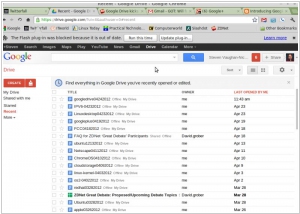Google Drive is #2 in Top 10 Cloud Storages
Online file storage and syncing service working as a file system for other Google's services. Allows to sync files between all your computers and mobile devices or collaborate on files with your team and partners. Version control, OCR, powerful online viewer. Provides 5 GB free disk space.
Positions in ratings
#2 in Top 10 Cloud Storages
Alternatives
The best alternatives to Google Drive are: OneDrive, DropBox, iCloud, Amazon WorkDocs, Box, Zoho WorkDrive
Latest news about Google Drive
2022. Google is adding new Drive, Docs, Sheets, Slides and Keep optimizations for tablets
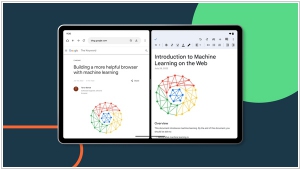
Google unveiled Android 12L earlier this year, aiming to enhance the usability of tablets. During the I/O conference, the company revealed its intention to optimize over 20 Google apps for larger screens. Today, Google has introduced several new features for Drive, Docs, Sheets, Slides, and Keep, taking a step towards fulfilling this commitment. The most noteworthy feature announced is the ability to effortlessly drag text or images between two Workspace apps that are open side-by-side. Google highlights that users can now drag content from apps like Chrome or Sheets and drop it directly into an existing document or spreadsheet cell. Additionally, in Google Drive, files can be swiftly uploaded by dragging and dropping them into the app. Furthermore, links to Drive files can be easily added by dragging the file into an open app like Keep.
2018. Google Drive added comments to Microsoft Office files
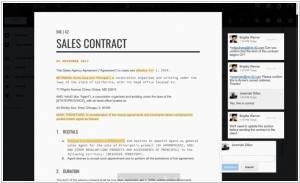
Google Drive has introduced a convenient solution for teams and agencies seeking to collaborate seamlessly using a combination of G Suite and Microsoft Office. Now, Google Drive users can easily add comments to Office files, PDFs, and images directly within the Drive preview pane. This eliminates the need to rely on external tools like Microsoft Office or Acrobat Reader, as well as the hassle of converting files to Google Docs, Sheets, or Slides formats. While it may not provide real-time commenting like G Suite or Office 365, this feature offers a significant improvement by eliminating the constant need to convert documents between Office and G Suite.
2017. Google launches Drive File Stream to replace the Google Drive desktop app for G Suite users
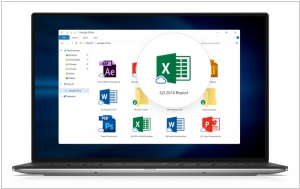
Google has introduced a new desktop application, called Drive File Stream, for Google Drive users who are subscribed to G Suite. This application will replace the existing Google Drive desktop app, which is scheduled to be discontinued next year. One notable distinction between the consumer and enterprise versions is the inclusion of administrative control features. Starting today, company IT departments will find the Drive File Stream settings within the Admin Console for their G Suite edition. This enables them to customize and deploy the solution within their domain, including options to enable synchronization, define installation preferences, disable automatic updates through Google Update, and manage other relevant configurations.
2017. Google Drive gets a new Backup & Sync desktop app
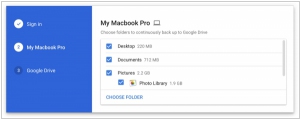
Google has unveiled its latest application, Backup and Sync, designed to facilitate the effortless backup of files and photos on both Mac and PC platforms. This utility serves as a replacement for the older Google Photos desktop app and the client applications of Google Drive. The newly introduced tool offers a user-friendly interface, where users can sign in to their Google account and select the folders they wish to continuously back up to Google Drive. Apart from backing up files stored on desktop computers, this software also allows users to back up photos from USB-connected devices like cameras and SD cards. As for business users, Google has plans to launch a dedicated enterprise solution called Drive File Stream, which will be made available to all G Suite users later this year.
2017. Google updated Drive with a focus on its business users
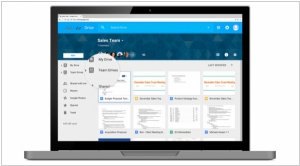
Google has implemented several updates to enhance its online file storage service, Google Drive, with a focus on improving its functionality for business and enterprise users. The primary emphasis is on providing a better service for teams within these organizations. As part of this effort, Google has made Team Drives available to all users after a preview phase that lasted approximately six months. Throughout the preview period, the team identified and addressed various issues, particularly related to permissions, to ensure a smooth general launch. Now, businesses of all sizes can leverage Team Drives for efficient file sharing within their enterprise. Another noteworthy addition is the general availability of Google Vault for Drive, which equips large enterprises, particularly those operating in regulated industries, with the necessary tools for archiving and data retention. This feature caters to the specific needs of these businesses, offering enhanced control and compliance capabilities. By prioritizing the requirements of business and enterprise users, Google Drive continues to evolve as a comprehensive and reliable file storage solution for organizations of all sizes.
2016. Google Drive gets intelligent search
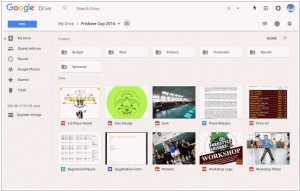
Google Drive is introducing an enhanced search capability that incorporates natural language processing and offers autocorrection suggestions for misspelled search terms. This means that when searching for documents, you can use phrases like "find my budget spreadsheet from last December" or "show me presentations from Anissa." As this feature is utilized more frequently, the search results will become increasingly precise. This development likely indicates that Google will soon integrate a voice interface into Google Drive as well.
2014. Google Drive adds OpenDocument support, sending files as attachments
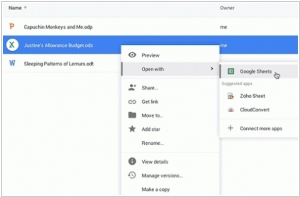
Google is introducing a series of updates for its cloud-based storage service, Google Drive. One notable enhancement is that Gmail users can now share Drive documents as attachments within email files. This feature proves beneficial when the recipient lacks permission to access the file on Google Drive or if you plan to delete the file from Drive in the future. Furthermore, Google has added support for importing the three major ODF (Open) file formats: .odt for documents, .ods for spreadsheets, and .odp for presentations. This addition simplifies the process of working with files from other open-source productivity suites like LibreOffice. Additionally, Android users of Drive can utilize voice commands within the Google search app to search for files. For example, a user can say, "OK, Google — search for holiday letter on Drive," streamlining the file search process.
2014. Google Drive for desktop now allows to launch files in preferred applications
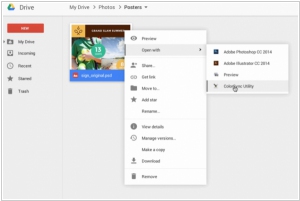
File storage service Google Drive has introduced a convenient feature that enables users to effortlessly launch their cloud-stored files with their preferred desktop applications. This functionality can be accessed through an optional Chrome extension. Once the extension is installed, users can simply right-click on applications stored in Google Drive and choose to open them using compatible applications installed on their computer. To utilize this feature, users must have the latest version of the Drive app installed on their Mac or PC, and their files should be synchronized to their computer. According to Google, the rollout of this new extension will take place gradually over the next few days.
2014. Google launched Drive for Work with unlimited storage
On Monday, Microsoft attempted to surprise the public by doubling the free and paid cloud storage limits in OneDrive. However, Google outdid them with a more impactful move. Google unveiled the enterprise edition of its file storage and synchronization tool, Google Drive for Work, offering UNLIMITED cloud storage for just $10 per month. To add a touch of amusement and showcase their capabilities, Google also increased the maximum file size to a staggering 5 TERABYTES (although finding such a file is quite rare). Moreover, the business version of Google Drive meets enterprise security requirements, providing features such as file encryption, comprehensive file access logging, and a 99.9% availability guarantee. Additionally, Google Drive for Work includes Office Compatibility mode, allowing users to edit MS Office documents in their original formats. It is worth noting that Google Drive for Work is part of the Google Apps suite, which means that by subscribing to it, users also gain access to other apps such as Gmail, Hangouts, Sites, and more, free of charge.
2014. Google Drive gets a Big price drop

For some unknown reason, Google has chosen not to participate in the game of "We are slightly reducing cloud pricing AGAIN" and instead has drastically slashed the fees for Google Drive to rock-bottom prices. The service now offers a free plan of 15GB, with the 100GB plan costing only $1.99 per month (previously priced at $4.99). If you require 1TB of storage, it will now cost you $9.99 per month (previously priced at $49.99). The new pricing for Google Drive is significantly lower compared to the offerings of its competitors. Even the closest rival, Microsoft, which recently lowered its OneDrive prices, provides 7GB for free, with the 100GB plan costing $4.1 per month. Not to mention other services such as Box and Dropbox, whose prices are 3-5 times higher.
2014. Google Drive adds activity feeds
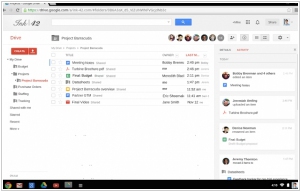
Google continues to resist incorporating a social intranet into its office suite and instead encourages the use of Google+ for such purposes. Nevertheless, they are making progress by adding social tools to their existing services. Today, an update has been rolled out to Google Drive, the cloud file storage, introducing activity feeds. This feature allows users to monitor the actions performed by their colleagues on a project or specific files. To access the activity feed, simply open the desired folder and click the "I" button. The right panel will display the activity feed, which includes actions like file movement, deletion, renaming, uploading, sharing, and adding comments. If you wish to view the log for specific files, just select them from the list. This new feature will be available to all users within the next week.
2012. Google Drive for iOS now can edit documents
Back in July, Google released a mobile client, Google Drive, for iOS, but users were disappointed to find that editing documents on their iPhones and iPads was not possible. Today, Google has addressed this issue, although with some limitations. Editing, including real-time collaboration, is now available, but only for text documents. While the video may suggest that spreadsheets can also be edited, it is merely a special effect. The actual functionality for editing spreadsheets will be introduced at a later time. Additionally, Google has introduced new features such as the ability to view presentations, create new folders, and move files between folders. The Google Drive app for Android has also received an update today, offering the capability to create folders, move files, and add comments to files and documents.
2012. Zoho will work on top of the Google Drive

It appears that the team at Zoho has made a decision not to develop their own file storage and syncing service. Instead, they have opted to leverage the capabilities of Google's offering, namely Google Drive. Recently, Zoho announced the integration of their office suite (Writer, Sheet, and Show) with Google Drive. This integration allows users to open documents stored in Google Drive using the online Zoho apps. To enable this integration, simply install the Zoho editors from the Chrome Web Store. Once installed, the integration will work not only in Chrome but in other browsers as well. This collaboration highlights the potential of Google Drive as a cloud storage solution for third-party applications. Project management systems, CRM tools, and intranet solutions can utilize Google Drive as an external storage option, enabling file access across various mobile platforms. The fact that even competing Zoho apps have undergone moderation demonstrates the trustworthiness of Google in supporting third-party developers.
2012. Google Chrome and Google Drive come to iPhone/iPad
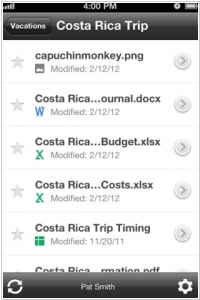
Remember how it was on Windows? First, Google released the browser - Google Chrome. Then it quietly turned the browser into the operating system and now, it like a cancer is trying to replace Windows by itself. The same thing happened on Mac OS. Recently Chrome also has become the default browser on Android. And few days ago Google (saying that Chrome is already the most popular browser in the world) has launched Chrome for iOS. However, Google's plan to replace all the operating systems by the Chrome can be broken by the Apple's mobile platform. The fact is that Apple has limited the capabilities of third-party browsers on the iOS beforehand. In fact, all third-party browsers on iPhone/iPad can work only as add-ons to the native browser Safari (using its secure Javascript-engine). In result - they work 2 times slower than Safari. Also, Safari is the default browser on iOS and it can't be replaced. ***
2012. Google launched Google Drive
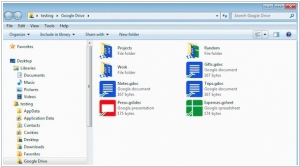
After (just) six years after the first rumors appeared Google has launched the legendary file storage service Google Drive. And the first question is: why they created Google Drive as a separate service, when Google Docs is de-facto Google's online storage that can store any files? There is a couple of reasons. First, such file storage and sharing services (Dropbox and clones) is a very hot topic either in consumer or enterprise space. And the attention that Google can attract with the new app in this space is not a bad thing for the search giant. Second, Google Drive will serve as a file system not only for Google Docs, but also for other Google's services that operate files (GMail, Google +, Google Sites, Picasa ...). ***
2011. Amazon Cloud Drive vs. Microsoft SkyDrive vs. Google Docs vs. Box.net
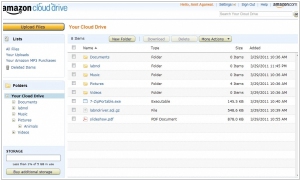
Last week, Amazon launched the new online file storage service Amazon Cloud Drive. And taking into account reputation of Amazon, as the online storage market leader, this event, of course, deserves our attention. Let's consider the advantages and disadvantages of this service compared to key competitors. The main parameters - are shown in the table (below). It's turns out that the main advantage of Amazon Cloud Drive - if free 5GB account with maximum file size of 2GB. However, its main drawback negates this advantage: you can not share this large file with anyone. Amazon Cloud Drive doesn't allow to share files publicly or protected by password. I.e. the only way of using this service - is a private storage for backup or enhancing your productivity. ***
2010. GDrive is now officially Google Docs
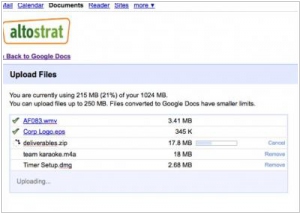
The soap opera about fabled GDrive (Google's online storage service) is finally over. As we expected, Google will not create a separate service. Instead, Google Docs allow now to upload any files and use them for online collaboration. Each account provides 1Gb free of charge. Additional memory can be purchased for $ 0.25/Gb per year. Google Apps users can purchase additional 5GB for $17 per year. Maximum file size is 250 MB. Many file types can be viewed online using Google Viewer (unfortunately, video is not supported). In addition, Google opened the Google Documents List API, which allows third-party applications to synchronize files with Google Docs or use it as an online file storage. There are already 3 useful applications using this API: ***

